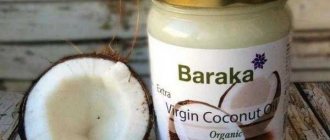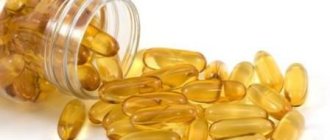16 October 2020 Admin Home page » Important nutritional points
Find out how to choose the right oil, what is the difference between olive and sunflower, what is truth and what is fiction.
Modern dietetics is full of prejudices and myths, controversial topics and misconceptions; this does not ignore the problem of choosing oil for salad dressing. This article describes in detail which oil is better: olive or sunflower.
The value of the oil depends on the concentration and proportion of fatty acids, the main ones being Omega-3 and Omega-6, which are essential unsaturated fatty acids.
Both olive oil and sunflower oil contain a low concentration of Omega-3; flaxseed oil is the leader in its content. In terms of Omega-6 concentration, olive oil contains 5 times less than sunflower oil.
Varieties and their differences
All olive oils are divided into three main types:
- Natural – ordinary or virgin oils, first and second cold pressed. It is obtained by applying certain temperatures and only by physical means. Used mainly for dressing salads or in sauces.
- Refined – refined oil or a mixture of refined and extra virgin olive oils. It is extracted from the pulp of damaged olives through physical and chemical processing and cleaning them from a specific taste. Used for frying or baking.
- Pomace oil is oil made from pomace. It is the result of an extraction process from the cake and is the least suitable of all the listed varieties for use for culinary purposes, most often used in baking or frying.
Summarize
- Cold-pressed olive oil may contain more nutrients than heat-processed olive oil.
- It contains healthy fats, vitamins E and K, and several antioxidants and anti-inflammatory compounds. These nutrients may promote brain and heart health, among other beneficial effects.
- You can get the most benefits by using extra virgin olive oil instead of other fats like butter and margarine.
Tags: Olive oil
- Related Posts
- Butter: benefits and harm to the body
- Which butter is healthier, ghee or regular butter?
- Flaxseed oil: benefits and harms, how to take
« Previous entry
The nutritional value
Olive oil is a unique storehouse of nutrients that are completely absorbed by the human body. The composition of the product directly depends on the processing method of a particular variety, but what remains unchanged for all types of olive oil is that most of their contents are fatty acids.
*The following nutritional information for olive oil is based on USDA data.
Calorie content of 100 g of olive oil is 884 kcal.
Total nutritional value of 100 g of olive oil:
- Total amount of fat – 100 g
- Monounsaturated fatty acids – 72.9 g
- Saturated fatty acids – 13.8 g
- Polyunsaturated fatty acids – 10.5 g
Acid content in 100 g of olive oil:
- Oleic – from 55 to 83%
- Linoleic – from 3.5 to 21%
- Palmitic – from 7.5 to 20%
- Stearic – from 0.5 to 5%
- α-linolenic – from 0 to 1.5%
Vitamin content in 100 g of olive oil:
- Vitamin E – 14.35 mg
- Vitamin K – 60.2 mcg
Mineral content in 100 g of olive oil:
- Sodium – 2 mg
- Calcium – 1 mg
- Potassium – 1 mg
- Iron – 0.56 mg
Properties of olive oil
The main components of olive oil include: oleic (omega-9), linoleic (omega-6), palmitic, stearic and linolenic (omega-3) acids, polyphenols, vitamin E, carotenoids and squalene. Let's try to understand the components and their features.
Oleic Acid (OMEGA-9):
- maintains softness, elasticity and healthy glow of the skin;
- stimulates the growth of thicker, longer and stronger hair (read more about olive oil for hair);
- reduces the manifestations of aging of the body, for example, in the form of premature wrinkles;
- eliminates dandruff;
- increases immunity;
- exhibits antioxidant properties;
- Prevents joint inflammation, stiffness and pain.
Linoleic acid (OMEGA-6):
- moisturizes hair and stimulates its growth;
- promotes wound healing;
- is an effective emulsifier in soaps and quick-drying oils;
- has anti-inflammatory properties;
- fights acne and reduces the chances of their further appearance;
- promotes moisture retention in skin and hair;
- makes oil mixtures more diluted in consistency when prepared, which is useful for use in the presence of acne.
Palmitic acid:
- has softening properties (at the same time, it does not leave a sticky residue after use);
- is the most abundant saturated fatty acid.
The chemical composition of olive oil depends on the following factors:
- type and quality of the pressed fruit;
- the region in which the olives grow;
- height of growth above sea level;
- weather during the growing season;
- harvest time and extraction process.
However, at the same time, the 3 main components of all types of product remain unchanged - oleic (up to 83%), linoleic (up to 21%) and palmitic (up to 20%) acids, which were described in more detail above.
There are additional features that the remaining components provide. For example, thanks to stearin, which is an ideal emulsifier that binds water and oil, products produced based on the subject of research remain stable during long-term storage. Let's add to this exceptional cleansing properties.
Omega-3, in turn, controls blood clotting and soothes joints. Polyphenols protect against UV rays, increase skin moisture levels and improve blood circulation and cell growth. Vitamin E is known for stimulating antioxidant activity, delaying aging and protecting against toxins, as well as smoothing the surface of damaged tissue such as scars, acne and wrinkles.
Carotenoids guard against hyperpigmentation due to UV radiation, acne and hormonal activity. In addition, they reduce water loss and are responsible for moisturizing and regenerating the skin.
Finally, squalene is similar in chemical composition to the secretion produced by the sebaceous glands, and, like sebum, helps soften and moisturize the upper layer of the epidermis.
Benefits and contraindications
Olive oil has a positive effect:
- On the cardiovascular system – reducing the level of “bad” cholesterol in the blood;
- On the digestive organs - providing an anti-inflammatory effect;
- On the condition of the skin - improving the overall appearance of the skin and promoting its rapid regeneration;
- Slows down the aging process in the body;
- Strengthens the bones of the skeleton;
- Improves the functioning of the body's immune and nervous systems.
Despite the fact that olive oil is considered a unique and healthy product, it also has its contraindications.
People should be careful when introducing olive oil into their diet:
- With sensitive skin;
- Suffering from cholecystitis (inflammation of the gallbladder) - so as not to aggravate the disease;
- Predisposed to rapid weight gain.
May protect against heart disease
Heart disease is the leading cause of death among men and women worldwide, causing more than 17 million deaths each year ().
Numerous studies show that replacing foods high in saturated fat with olive oil can help reduce high LDL (bad) cholesterol and blood pressure, two major risk factors for heart disease (, , ).
One study of more than 84,000 women found that replacing 5% of saturated fat with foods high in monounsaturated fat, including olive oil, reduced the risk of heart disease by 15% ().
The Mediterranean diet, in which olive oil is the main source of fat, reduces the risk of heart attack and stroke by 28% ().
Summary:
Replacing sources of saturated fat with extra virgin olive oil may reduce your risk of developing cardiovascular disease.
How to select and store
How to choose good quality olive oil:
- The first thing you should pay attention to is the color of the product. Ideally, olive oil should have a pleasant golden hue that shimmers slightly in the sun. In no case should the color of the oil have yellow or gray tints - they are a sign of low quality, and may also indicate counterfeiting (for example, when a manufacturer tries to sell rapeseed oil or a mixture of other different types of oils under the guise of olive oil).
- The second important selection criterion is the abbreviations and inscriptions on the bottle. If you are looking for a product with the maximum range of beneficial properties, then you should pay attention to those oils whose label will contain the inscription “Extra virgin” or the abbreviation DOP - both of these designations indicate that the product is made from the best varieties of olives and is ideal for for use in both culinary and cosmetic purposes.
- Well, the third important indicator of quality is the acidity of olive oil, measured by the percentage of free oleic acid. The following are considered optimal indicators: extra virgin – no more than 0.8%; virgin – no more than 1.5%; refined product – no more than 0.3%.
When choosing olive oil, the date of manufacture, the country of production are also of great importance - the leaders in production are Spain, Italy, Greece, and the container in which the product is sealed - tinted glass is preferable to transparent plastic.
How to properly store olive oil:
- Make sure that the printed container is sealed;
- Control temperature and light protection. The best place to store olive oil is in a cool, dark place, such as a closed cabinet or refrigerator.
How to choose a quality product?
This liquid miracle is divided into virgin, refined and combined (a mixture of both types).
Generally, the fewer artificial interventions performed during the production process, the lower the resulting free fatty acid content, thus resulting in a healthier, tastier and more valuable product. Quality, in most cases, is quite expensive. Be careful - a low price is often an indicator of low quality!
In order to understand which olive oil is better – refined or unrefined (virgin), as well as what acidity it should have, let’s look at both types in more detail.
Maximum quality We are talking about a product made by cold pressing (up to 50°C), without chemical additives, i.e. completely natural:
- Extra virgin – has an acidity of less than 0.8 g/100 g inclusive, is produced directly from olives, only mechanical processes are used during production. As a rule, it is recommended for use in cold kitchens or seasoning ready-made dishes.
- Virgin – free fatty acid content is less than 2 g/100 g inclusive. Ideal for salads, appetizers and other cold dishes, as well as for light stewing and frying.
- normal virgin – free acidity is less than 3.3 g/100 g inclusive.
Lower quality During refining, the product is heated and thus changes occur in it; the free fatty acid content is a maximum of 0.5%. Pomace olive oil (from oil cake) is of the lowest quality.
Combined It is obtained by mixing both types discussed above.
Important! Olive or sunflower oil – which is healthier? This question interests all people, regardless of their way of life. The answer in this case is ambiguous - both types have many positive qualities. However, the product made from sunflower is inferior to olive in terms of the content of phytosterols, blockers of cholesterol absorption.
Olive oil in the diet: answers to questions
What is the daily allowance of olive oil for children and adults?
Recommended daily intake of olive oil:
- For an adult – 40 g
- For a baby from 6 months to 1 year – from 1 g as a starting dose to 5 g
- For children under 3 years old – 15 g
- For children over 4 years old – 25 g
At what age can children be given olive oil?
Children can be given olive oil starting from 6 months, adding 1-2 drops to cooked food. By 12 months, the amount of oil can be increased to 3-5 drops.
Olive oil in the diet of pregnant and lactating women
For pregnant and lactating women, olive oil is a real godsend. It not only serves as an excellent remedy for the prevention of constipation, can lower cholesterol levels and even prevent stretch marks, but also plays an important role in the formation of the child’s bone and nervous system and his brain thanks to the polyunsaturated fatty acids in its composition.
Pregnant and lactating women can consume 1 teaspoon of olive oil daily , either alone or in combination with other products.
Can diabetics use olive oil?
Due to the lack of carbohydrates, olive oil, like many other vegetable oils, is excellent for diabetics. In addition, the unsaturated fats contained in olive oil help lower sugar levels and improve the absorption of insulin by the body.
Diabetics should use olive oil daily, or it is better to completely replace the usual sunflower oil with it.
Can allergy sufferers use olive oil?
Those people who are susceptible to allergic reactions are allowed to consume cold-pressed olive oil.
If we talk about the occurrence of allergies to olive oil itself, this happens extremely rarely. If symptoms of food intolerance to olive oil appear, olives, olives and all dishes with olive oil should be excluded from the diet, replacing the product with another vegetable oil (sunflower, flaxseed).
Olive oil in dietary nutrition
Despite the fact that olive oil is considered a high-calorie product, it is often used in dietary nutrition. And there are good reasons for this.
Thus, oleic acid, which is part of the product, actively synthesizes oleulethanolamide, a substance that signals the brain that the body is full. Thanks to this, as a result of regular consumption of olive oil, the amount of food eaten gradually decreases, and the need for frequent snacks disappears.
For the same reason, it is recommended that those losing weight consume olive oil in its pure form, 1 teaspoon per day in the morning on an empty stomach.
Contains powerful antioxidants
Extra virgin olive oil may contain more antioxidants than lower quality olive oils because it is not cooked ().
Antioxidants protect your body from unstable molecules called free radicals. In turn, this helps prevent chronic diseases such as heart disease, diabetes and cancer ().
Per tablespoon (15 ml), olive oil contains 12.9% of the RDA for vitamin E, an essential nutrient and powerful antioxidant (,).
It is also rich in plant compounds such as oleuropein and hydroxytyrosol, which have demonstrated powerful antioxidant properties in animal and test tube studies (, , ).
Researchers believe these compounds may be partly responsible for the benefits of the Mediterranean diet, including stronger bones and a reduced risk of heart disease, brain disease and some types of cancer ().
Summary:
Extra virgin olive oil contains powerful antioxidants that can protect your body from numerous diseases.
What to cook with olive oil?
Olive oil can be used not only for baking and frying dishes, but also for pickling, preparing all kinds of sauces and even soups.
One of the most popular dishes with olive oil is, of course, Greek salad. In it, olive oil plays the role of a salad dressing, to which a little vinegar, pepper and salt are also added. The prepared dressing is poured over sliced tomatoes, cucumbers, red onions and green peppers. The salad is sprinkled with grated cheese on top (it is recommended to use feta or feta cheese) and decorated with olives.
Finally
Olive oil is a unique product. It is often called “liquid gold”, and it really has great value for the human body, so olive oil must be in every housewife’s pantry.
Share link:
The power of olives for skin and hair
Try applying olive oil to your body and hair - you will be surprised by the results.
The benefits of olive oil for skin are undeniable. Even in ancient times, olive oil was used as a wide-spectrum cosmetic product. It was used:
- as a tanning product;
- for moisturizing;
- for wound healing.
It is suitable for moisturizing all skin types. Even on oily skin it is recommended to apply a little oil: this will reduce the intensity of the sebaceous glands. Basically, recipes based on clay, honey and lemon are popular.
The benefits of olive oil for hair are no less significant. It can smooth out unruly curls, make them softer, and get rid of split ends.
The easiest way: Apply olive oil evenly throughout your hair, paying special attention to the roots, ends and scalp. A light massage during application will not hurt. Leave the mask on for 10-15 minutes, then wash your hair with your shampoo. If the oil is not washed off the first time, repeat the procedure. The mask can be done several times a week.
To enhance the effect, you can use eggs, lemon, honey and other ingredients.
Sclerosis
Anyone over 50 who experiences signs of forgetfulness, frequent pain in the head and heart, or hesitancy when walking, may benefit from taking garlic oil to dilate blood vessels:
Mash the cloves of one head of garlic into a pulp, place in a glass container, pour a glass of the Extra Virgin variety of product, and put in the refrigerator. After a day, mix 1 tsp. garlic composition with 1 tsp. lemon juice, take half an hour before meals for a month.
After a month, repeat the course.
Use in cosmetology
Since ancient times, olive oil has been used as a cosmetic product beneficial for skin, hair, and nails. Thanks to the presence of unique substances in its composition, this product cleanses, moisturizes, smoothes out fine wrinkles and relieves inflammation on the skin. The phenols contained in the composition slow down skin aging, making it smooth and soft.
For hair, olive oil is a source of vitamins and healthy fats, which are responsible for the shine and healthy appearance of curls. Masks based on this product are useful for all hair types.
This product is no less valuable for nails. Weak, peeling, dull and unsightly colored nails will definitely restore a healthy appearance if you regularly rub a little warm olive oil mixed with a few drops of lemon juice into the cuticles and nail plates.
Treatment of cholelithiasis
Gallstones form when eating cooked food. In the body, such food promotes the formation of oxalic acid salts. Therefore, boiled food must be combined with fresh herbs and salads.
After consultation with a doctor, the following methods are used to dissolve gallstones:
Do a cleansing enema. Mix half a glass of lemon juice and half a glass of olive oil. Take no earlier than two hours after dinner. Lie on your right side and place a heating pad under your liver. Do the enema again in the morning.
The procedure eliminates bile stagnation and helps remove sand and stones.
Prepare 0.5 liters of olive oil and 0.5 liters of strained juice of fresh lemons. Wait at least 6 hours after your last meal. Drink 4 tbsp. oil, immediately wash down with 1 tbsp. lemon juice. Repeat every 15 minutes. When the oil runs out, drink all the remaining lemon juice.
If stones have formed in the bile ducts, take 1/2 tsp of the herbal product. half an hour before meals, gradually increasing the dosage to half a glass.











